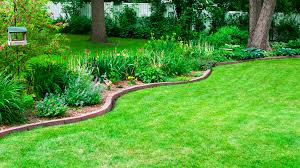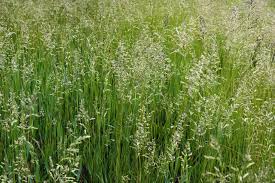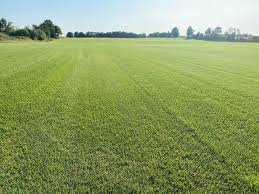The Beginning of Something Green
When Michael bought his first house, he had one dream: a backyard where his kids could run barefoot on soft, green grass. But instead, he found a dusty, brown patch of dirt. No shade. No softness. Just dry soil and weeds.
Determined to change it, Michael didn’t hire a landscaper. He didn’t install artificial turf. He went to the local garden store and picked up a bag of grass seed.
Little did he know, that small bag would become the start of something much bigger — a transformation not just of his yard, but of how he saw his space.
What Is Grass Seed and Why Is It So Powerful?
Grass seed is exactly what it sounds like — seeds that grow into different types of grass. But it’s more than that. It’s a fresh start. Whether you want to fix a few dead spots, start a lawn from scratch, or thicken your existing turf, grass seed is your best friend.
Unlike laying sod, which gives you instant but expensive results, seeding your lawn is a slower but much more rewarding process. It costs less, adapts better to your soil, and allows you to pick the perfect type of grass for your climate.
Choosing the Right Grass Seed for Your Yard
There are many types of grass seed, and not all are created equal. Picking the right one is the first step to success.
Here are some common types:
-
Kentucky Bluegrass – Perfect for cool climates; dark green and soft.
-
Bermudagrass – Thrives in hot, sunny areas; ideal for southern regions.
-
Tall Fescue – Grows well in a variety of conditions; drought-tolerant.
-
Perennial Ryegrass – Grows fast; great for quick coverage or patching.
To choose the best grass seed, consider:
-
Your climate (cool, warm, or transitional)
-
Your yard’s sun exposure (full sun, partial shade, or full shade)
-
The amount of traffic your lawn will get (kids, pets, games, etc.)
How to Plant Grass Seed the Right Way
Seeding a lawn is simple, but there’s a right way and a wrong way to do it. Follow these steps to give your seeds the best chance to grow:
Step 1: Clear the Area
Remove any debris, weeds, or old grass. Rake the soil to loosen the top layer — this helps seeds take root.
Step 2: Test and Improve the Soil
Use a soil test kit to check the pH level. Most grass grows best between 6.0 and 7.0. You can add lime or sulfur to adjust the levels if needed.
Step 3: Spread the Grass Seed
Use a broadcast spreader or your hands for small areas. Spread evenly, and don’t overdo it — too much seed can crowd growth.
Step 4: Cover the Seed
Lightly rake the area so the seeds are just under the soil surface. You can also add a thin layer of straw or mulch to protect the seed from birds and wind.
Step 5: Water Gently
Water right after planting, and keep the soil moist (not soggy) for 2–3 weeks. Light watering once or twice daily works best during germination.
Grass Seed Care: The First Few Weeks Matter Most
The early days after planting are critical. Here’s what to keep in mind:
-
Don’t walk on it. Keep off the seeded area until the grass is at least 3 inches tall.
-
Keep watering. Once the grass is established, switch to deeper, less frequent watering.
-
Wait to mow. Don’t mow until the new grass is tall enough, and only trim a little at first.
Heading: Common Problems with Grass Seed (and How to Fix Them)
Even if you do everything right, problems can still happen. Here are a few common issues and how to solve them:
-
Problem: Seeds aren’t growing.
Fix: Check if birds are eating the seed or if you’re underwatering. Also, make sure you’re planting during the right season (spring or early fall is best). -
Problem: Uneven growth.
Fix: You may have spread the seed unevenly. Use a seed spreader and reseed the bare spots. -
Problem: Weeds taking over.
Fix: Use a starter fertilizer that includes weed prevention or remove weeds manually until the grass is strong enough to compete.
A Story of Success: From Dirt Patch to Dream Lawn
Elena had lived in her home for five years and always felt embarrassed by her front yard. The soil was poor, the weeds were out of control, and nothing seemed to grow. One spring, she decided to start fresh.
She chose a mix of tall fescue and ryegrass, prepared the soil, and followed every planting step carefully. Within weeks, little green shoots began to appear. By summer, her front yard looked like a picture from a gardening magazine.
Neighbors stopped to ask what she had done. Her answer? “Just good grass seed and patience.”
Keeping Your Lawn Beautiful Year After Year
Once your grass has grown in, here are a few tips to keep it looking great:
-
Mow regularly — but never cut more than 1/3 of the grass height at a time.
-
Fertilize a few times a year, especially in spring and fall.
-
Aerate your soil once a year to help water and nutrients reach the roots.
-
Overseed every fall to thicken your lawn and prevent weeds.
Conclusion
It’s easy to overlook something as small as a seed. But grass seed can change the way you see your yard — and how you use it.
Whether you’re starting fresh or reviving a tired lawn, remember: a lush, green space starts with just a few seeds, a little care, and some patience. Your dream lawn might be only a bag of grass seed away.







